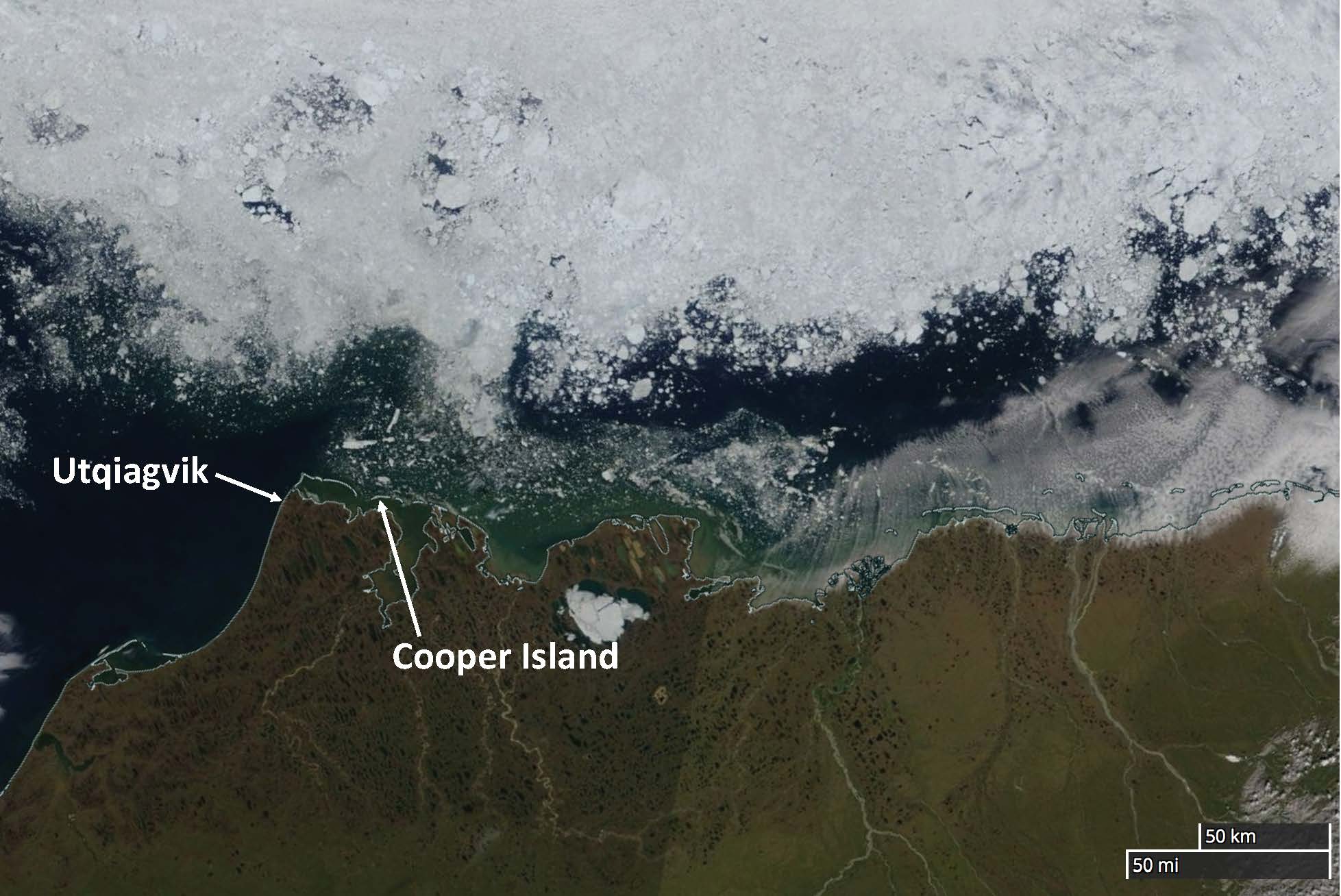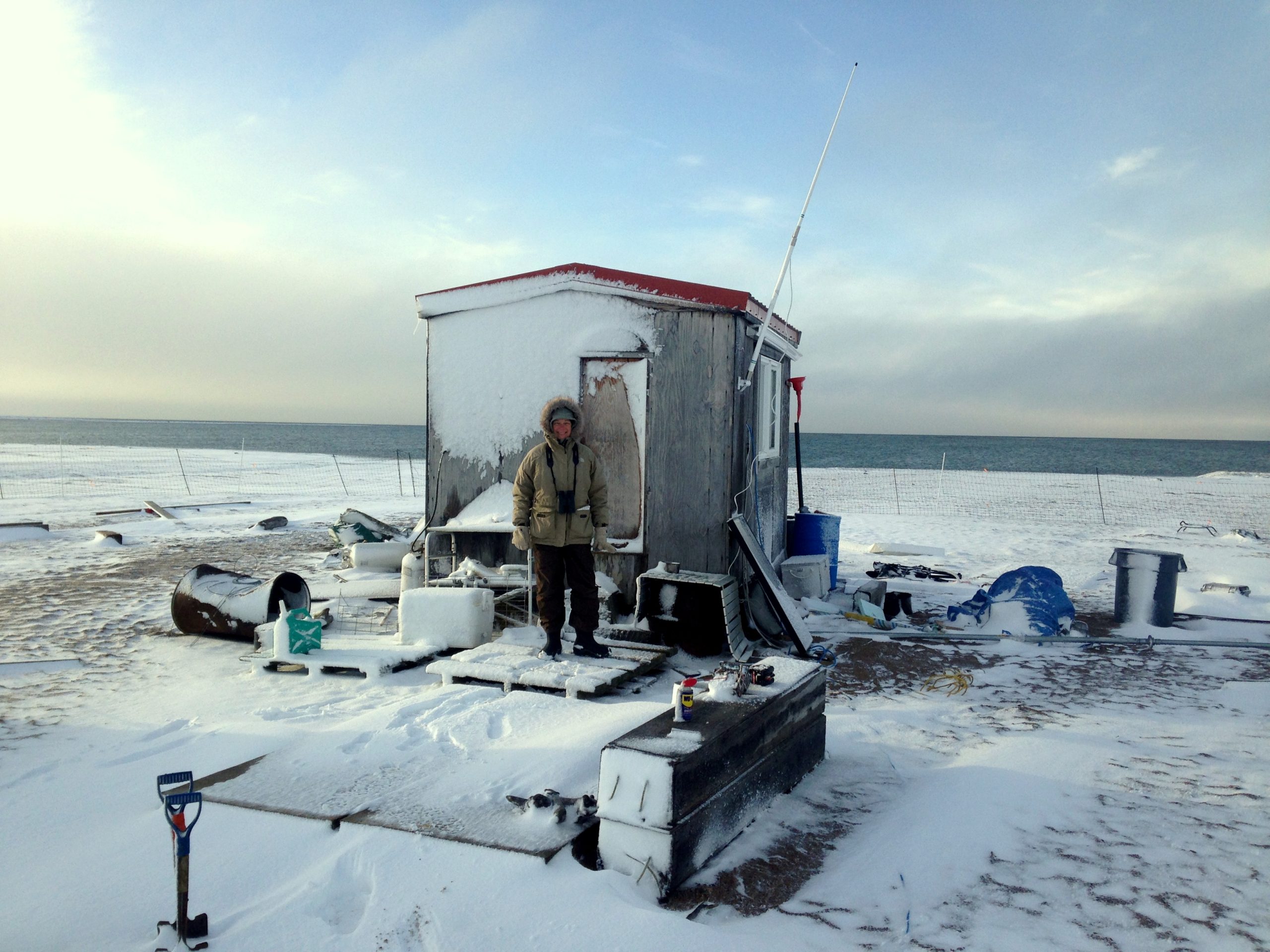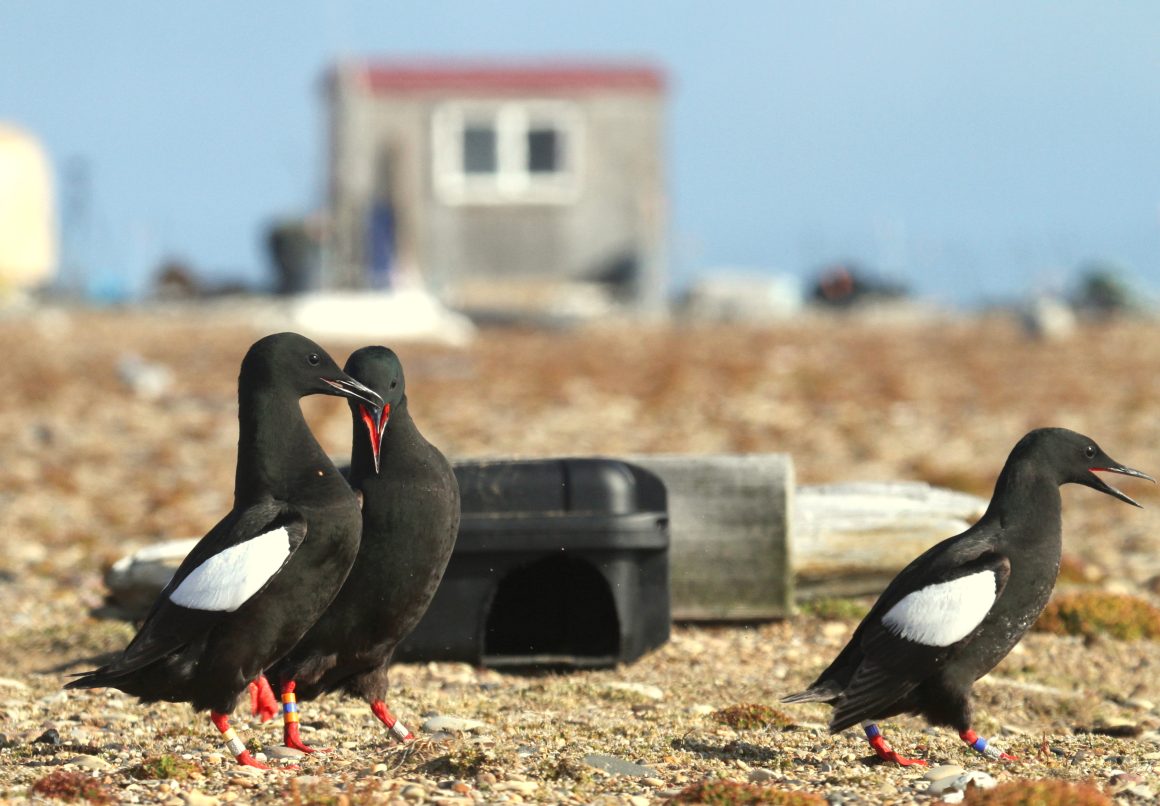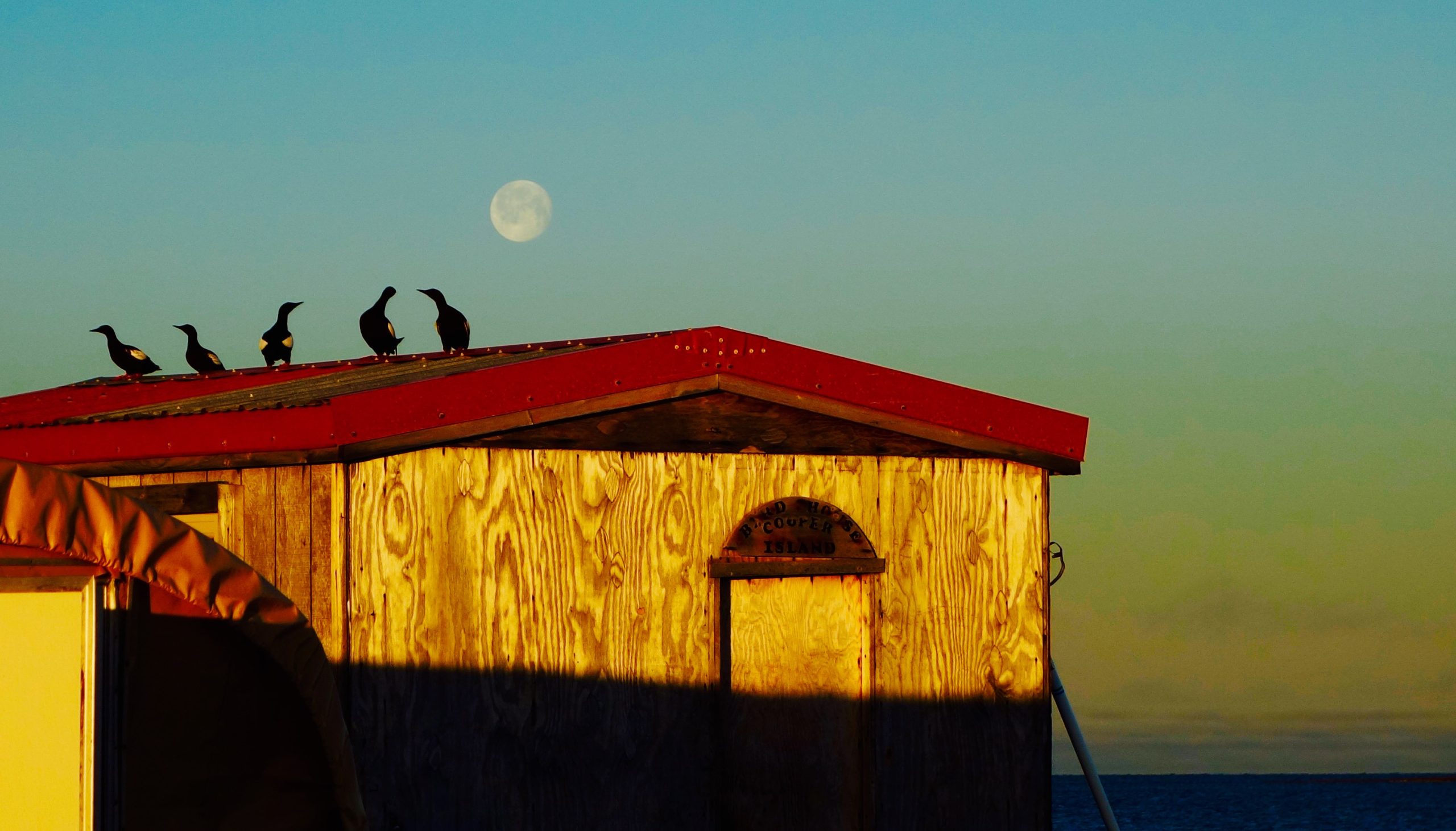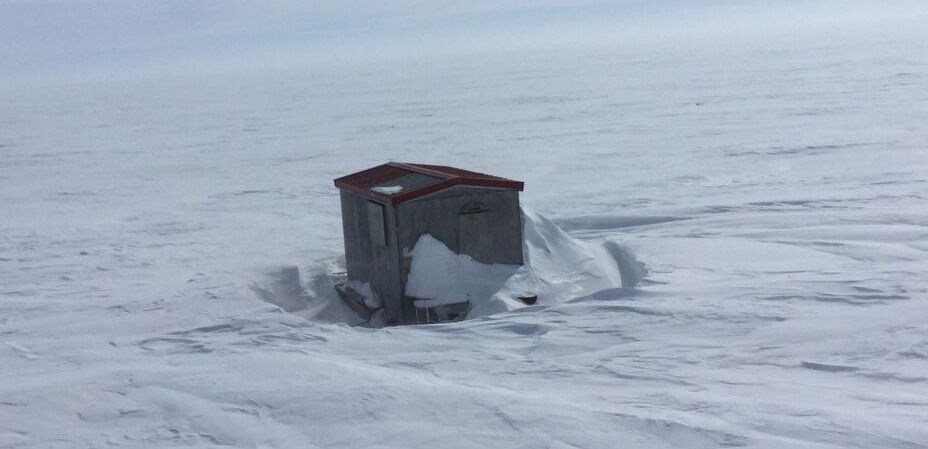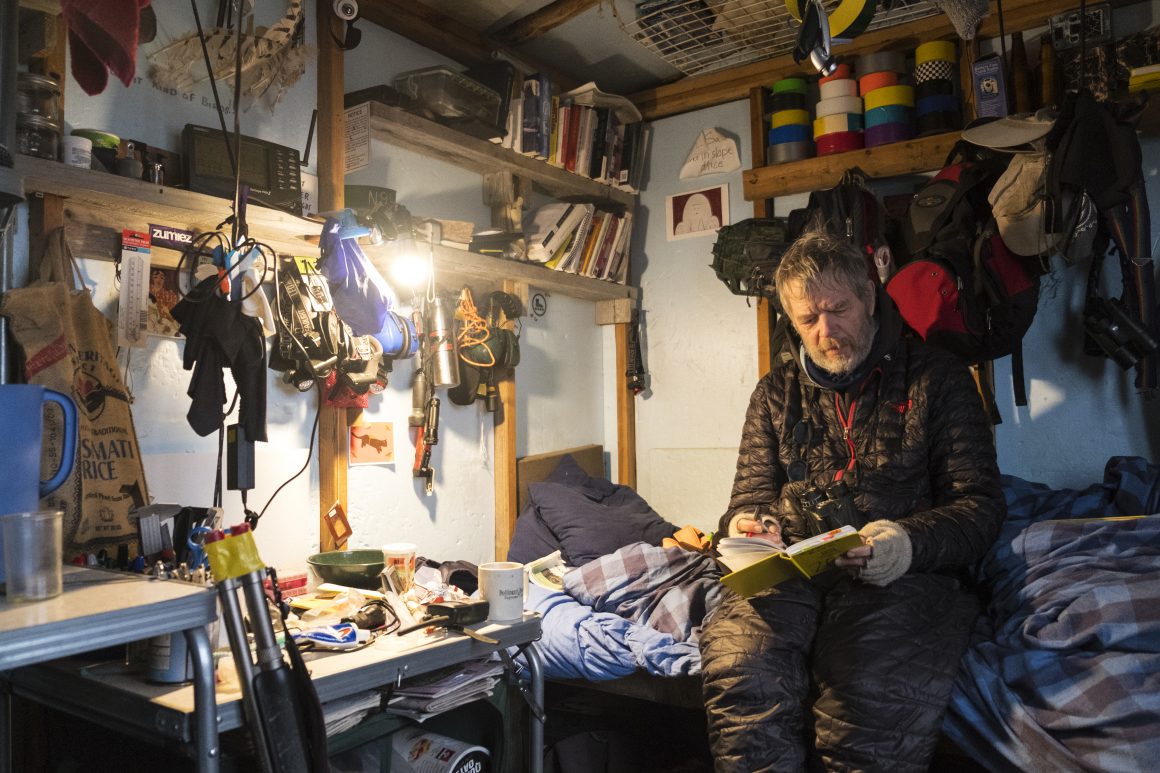Over the last four decades there have been many technological advances that have helped make the fieldwork on Cooper Island more pleasant and efficient but none has had a bigger impact on day-to-day operations than the addition of the 8×12 ft. cabin that has served as a summer home since 2003. After the 2002 field season it was clear to me (and to my field companions who saw their tents shredded by a polar bear in August 2002) that there was a need for sturdier living quarters on Cooper Island. While protection from bears was the motivating factor for getting the cabin, its ability to provide a windless, dry and sometimes warm living space has changed the way life is lived on the island. Friends of Cooper Island purchased the cabin in Barrow and we hauled it over the lagoon ice in April 2003. It took me two years to realize I had to be very serious about how I boarded up the doors and windows when I closed down camp at the end of the field season.
After its first summer on the island, in the fall of 2003 I was informed by polar bear biologists, who had been doing an aerial survey of the mainland coast, that they had seen a bear on Cooper and that it ran to and into the cabin as they buzzed the island. The bear had earlier broken in the door and was using the cabin as a shelter while waiting for the late fall ice to form. My friend, Craig George, went out to survey the damage and board up the door for the winter. Other than some bent camp furniture and many teeth marks in my squeeze bottles containing everything from sun block to hot sauce, there was no major damage. The next winter I was informed in March that someone snowmobiling on the sea ice near Cooper had seen “debris” scattered by the cabin. I went out to the island in late March and found the cabin door open and a major snow drift inside. With help from my companions from the Barrow Arctic Science Consortium I shoveled out the cabin before boarding the door back up.
Luckily this string of winter break-ins stopped after 2004, but because the integrity of the cabin and condition of its contents are so important for summer research on Cooper Island, every season now starts with a trip to the island in March or April to assess the conditions of the island’s “infrastructure”.
Our arrival in Barrow on the first of April was a lesson in how while the month is spring throughout the northern hemisphere, the season of spring can mean very different things at different latitudes. In Seattle we left temperatures of over 50 degrees and landed in Barrow to find it to be hovering just about 0 degrees F. But spring had already started in Barrow as was evident by the first and extremely early Bowhead whales passing by in the lead (open water adjacent to shore).
I was also reminded yet again that if increasing heat is what characterizes spring in north temperate regions, in the Arctic spring is most noticeable by its rapidly increasing daylight. While the sun was down for about ten hours during our three day stay in Barrow, its daily period below the horizon was decreasing by about ten minutes per day. The “night time” sky was never really dark as the sun was not more than 12 degrees below the horizon — and on May 12 will come above the horizon and remain there until the first week of August.
I return to Barrow every year in early June hoping to get out to Cooper by June 10 or 13, just after Black Guillemots arrive and when the island will already have experienced one month of constant (24-hours per day) daylight. I try to post regularly from the island and hope you visit this site to see what is occurring with the birds, bears and researchers on Cooper Island.
